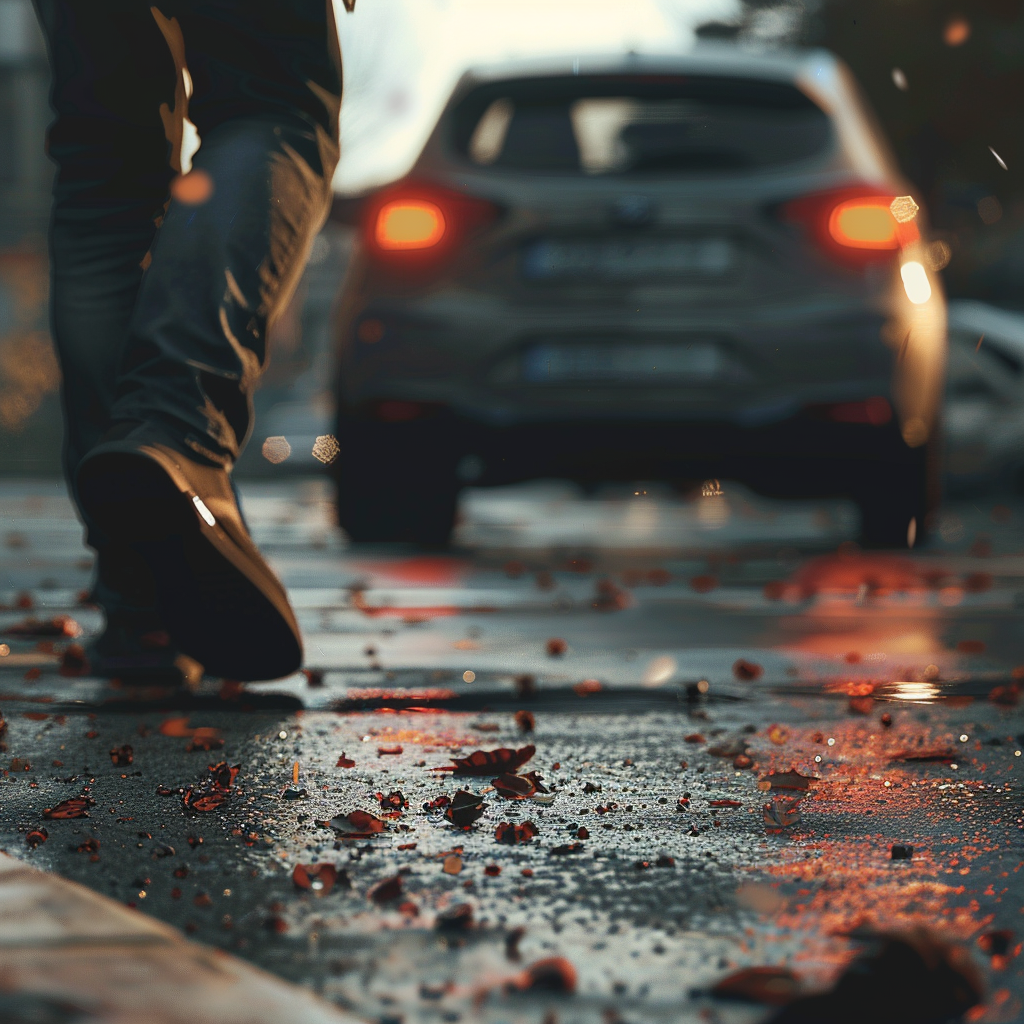As a personal injury law firm deeply committed to the rights and recovery of our clients, we’ve encountered numerous hit-and-run cases that have left victims feeling helpless and frustrated. The chaos in the moments following these incidents can obscure the clarity needed to take effective action. Through this blog, I aim to demystify the process of collecting crucial evidence essential for holding those responsible accountable, drawing from years of legal experience and success in navigating these challenging waters.
Table of Contents
- Understanding Hit-and-Run Accidents
- The Importance of Evidence in Proving a Hit-and-Run
- Types of Evidence Needed to Prove a Hit-and-Run
- How to Collect Evidence After a Hit-and-Run
Understanding Hit-and-Run Accidents
Definition and Legal Implications
A hit-and-run involves a driver causing an accident and then leaving the scene without providing contact information or offering assistance to injured parties. Legally, this act is not just irresponsible; it’s criminal, with penalties ranging from fines and points on the driver’s license to incarceration, depending on the jurisdiction and severity of the incident.
Hit-and-run accidents compound victims’ trauma by adding layers of legal complexity to their recovery process. The absence of the at-fault party initially leaves victims uncertain about who will cover medical expenses or property damage. This uncertainty underscores why understanding these incidents’ legal implications is crucial for anyone affected.
The Importance of Evidence in Proving a Hit-and-Run
Overview of Why Evidence is Crucial
In the aftermath of a hit-and-run, evidence serves as the backbone for any legal pursuit or insurance claim. Without concrete proof, holding the responsible party accountable becomes significantly more challenging. This evidence not only helps to identify the perpetrator but also supports claims for damages and injuries sustained during the incident.
The collection and preservation of relevant evidence are paramount to building a strong case. It can be the difference between achieving justice with adequate compensation and facing an uphill battle with little to no support. Given these stakes, understanding what types of evidence are most effective is essential for victims navigating this difficult situation.
Types of Evidence Needed to Prove a Hit-and-Run
Physical Evidence from the Scene
Items left behind by the perpetrator, such as car parts or paint chips, can be invaluable. These pieces might help identify the make and model of the vehicle involved. Additionally, skid marks or property damage near the scene provide insights into how the incident occurred.
Visual Documentation: Photos and Videos
Photographs and videos taken immediately after an accident capture crucial details that may later prove essential in identifying the fleeing driver. This includes images of any physical damages, debris from vehicles involved, and surrounding areas for potential cameras that caught the event.
Eyewitness Accounts
Statements from people who witnessed the hit-and-run offer perspectives that could lead to identifying the culprit or understanding how events unfolded. Their testimonies add credibility to claims when pursuing legal action or filing insurance reports.
Police Reports and Official Documents
The official report filed by responding officers contains a detailed account of their findings at the scene—information that plays a critical role in investigating these incidents. Documentation related to medical treatment following an accident also contributes significant evidence regarding injuries sustained due to said incident.
Digital Evidence: Traffic Camera Footage, Dash Cam Recordings
Modern technology offers another layer of evidence through footage captured by traffic surveillance systems or personal dash cams installed within vehicles. Such digital proofs are compelling; they often provide clear visuals on accidents including identifiable features of hit-and-run drivers’ cars, making them instrumental in solving these cases
How to Collect Evidence After a Hit-and-Run
Immediate Steps Following the Incident
The moments after a hit-and-run are crucial for evidence collection. Ensure your safety first, then, if possible, quickly document the scene using your smartphone or camera. Note details like time, location, and any immediate observations about the fleeing vehicle (color, make, model) or driver.
Gathering Information While at the Scene
Try to capture varied photos of the surroundings including traffic signs and signals which might influence legal interpretations of fault. If there are witnesses present, gently ask for their contact information and if they’d be willing to share what they saw. This could provide valuable corroborative statements later on.
Seeking Out Surveillance or Dash Cam Footage
Look around for nearby businesses or homes that may have surveillance cameras pointed toward the road; these could have recorded crucial footage of the incident. Politely inquire with property owners if such footage can be reviewed. Additionally, checking in with other drivers who were in proximity might uncover dash cam videos capturing aspects of the accident.
Documenting Injuries and Damages
As soon as feasible following an incident seek medical evaluation even if injuries seem minor initially – documentation created during this visit can prove pivotal when establishing impact severity caused by the hit-and-run. Make sure to also document all damage done to your vehicle, taking clear pictures from multiple angles ensuring a comprehensive record exists detailing the extent of harm sustained.
Perhaps most importantly, contact an auto accident attorney as soon as possible. At Silver Injury Law, we will send one of our attorneys to the scene to collect evidence before it becomes stale, putting you in the best position to win your case when the at-fault driver is found. Contact us today for more information.




